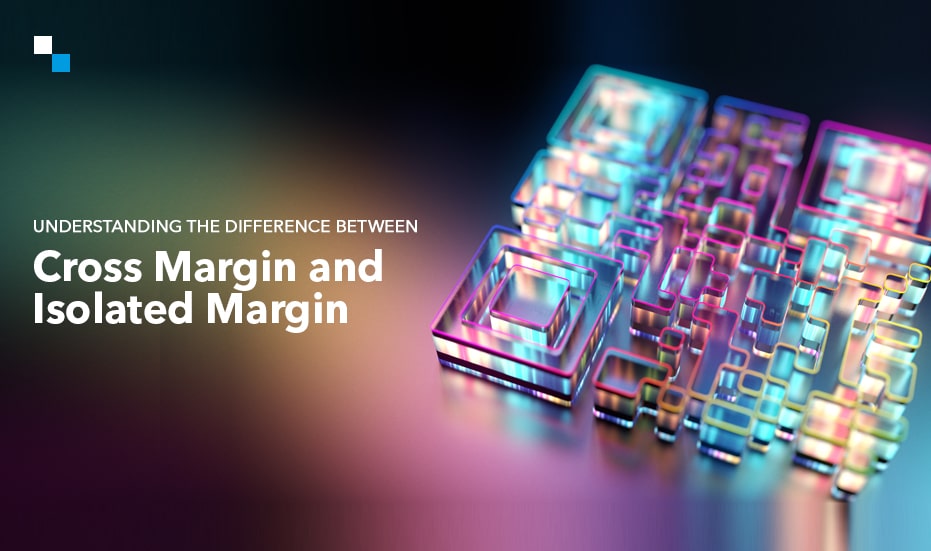
IDO Launchpad Development- Is it Your Ticket to Early Access & Explosive Gains in 2024?
March 21, 2024
Why Play to Earn Game Development on Solana Ensures a Long-Term Success?
March 22, 2024Cross Margin vs. Isolated Margin: Understanding the Difference
Margin trading offers the opportunity to amplify potential gains, but it also introduces additional risks that demand careful consideration. One of the pivotal decisions during margin trading exchange software development is choosing between cross margin as well as isolated margin trading strategies. Each approach comes with its own set of advantages and drawbacks, shaping the dynamics of risk management and profit potential.
In this blog, we will understand cross margin and isolated margin, exploring their differences, functionalities, and how they impact a trading journey.
Understanding Cross Margin
Cross margin trading is a strategic approach to manage risk within the cryptocurrency trading landscape. This method involves traders using all of the balance in their accounts as collateral for their active positions, thereby exposing the full account balance to potential losses in the event of adverse market movements.
By leveraging the entire account balance in the form of collateral, traders can access higher levels of leverage, enabling them to open larger positions with a smaller initial investment. While this can amplify potential profits, it also increases the overall risk exposure. However, the benefit of cross margining lies in its ability to prevent individual position liquidation by creating a buffer through the account balance.
Working of Cross Margin
Let us explore the dynamics of cross margin trading through a scenario featuring Alice, a trader with a $15,000 account balance who embraces cross margin as her risk management strategy. In this context, Alice commits all of her balance in the account as collateral for her trading endeavors.
In a bullish market, Alice decides to enter a long position on Ethereum (ETH) at $2,500 per ETH, leveraging 5x to purchase 3 ETH, granting her control over a 15 ETH position with her $15,000 collateral. Subsequently, as Ethereum’s price surges to $3,000 per ETH, Alice seizes the opportunity to sell her 3 ETH at this elevated price point, realizing a profit of $15,000. Consequently, Alice’s account balance grows to $30,000 ($15,000 initial balance + $15,000 profit).
Conversely, in a bearish market scenario where Ethereum’s price drops to $2,000 per ETH, Alice’s 3 ETH position would now be valued at $6,000. Unfortunately, with the price decline exceeding her account balance, Alice faces an unrealized loss of $9,000 (the difference between the purchase price of $2,500 and the current value of $2,000 per ETH), leaving her in a challenging financial position with no remaining funds in her account.
In a margin trading exchange software platform, if losses surpass available collateral, a margin call may be initiated. A margin call comprises a request from the exchange or broker for additional funds to cover losses or reduce the position size. Failure to meet these obligations could result in automatic closure of a portion of Alice’s position by the exchange to mitigate further losses and uphold market stability.
Understanding Isolated Margin
Isolated margin refers to a risk management approach where traders designate a specific value of collateral for each position they initiate. This strategy also grants precise control over risks associated with every trade. Each position is supported by a designated value of collateral, ensuring that the collateral allocated to only a specific position is risky in the event of an adverse trade outcome.
By isolating risk in this manner, any loss due to one position is contained, preventing them from impacting the total balance of the account. While isolated margin trading still permits leverage, traders have the flexibility to adjust leverage for every position, facilitating a tailored risk management approach.
Effective management of collateral allocation and position sizes is crucial in case of isolated trading to prevent underfunding or overleveraging positions and safeguard the trader’s entire portfolio. Furthermore, some margin trading exchange software may implement margin calls that necessitate traders to augment the collateral or adjust the size of their position if any loss breaches a predefined threshold, adding an additional layer of risk management oversight.
Working of Isolated Margin
Let us imagine that Sarah is a trader with a $12,000 trading account balance. Sarah opts for isolated margin trading and decides to participate in separate trades for Litecoin (LTC) and Ethereum (ETH), each with different and isolated margins.
She puts away $3,000 in account as well as assigns $4,000 as a collateral for LTC trade and $5,000 for ETH trade. It segregates her LTC position and ETH position, ensuring that potential losses are confined to the specific collateral assigned to each trade.
For example, in case Litecoin’s price experiences a downturn while her LTC position is active, any losses incurred are restricted to the $4,000 that provide for collateral for the specific trade. The isolation of trades protects Sarah’s other positions from being affected, as the $5,000 earmarked for ETH trading remains untouched. This meticulous risk management empowers Sarah to manage each trade independently.
Even in scenarios where losses in the LTC position surpass the $4,000 collateral, no margin call would be initiated, safeguarding ETH trading from any negative repercussions. The isolated margin framework integrated into margin trading exchange software enables Sarah to proactively mitigate risks and safeguard her portfolio through precise collateral assignment for every position. However, maintaining risk management practices and continuously monitoring position sizes are essential to uphold a well-rounded trading strategy.
Main Differences Between Cross Margin and Isolated Margin
Cross margin trading simplifies risk management but has the potential to expose the entire account to substantial losses by utilizing the entire balance in the account as collateral for all positions. In contrast, isolated margin trading enables traders to allocate specific amounts of collateral to individual positions, providing precise risk control and promoting diversification.
Cross margining may lead to premature liquidation of holdings in volatile markets, while isolated margin diminishes the risk of one position’s losses impacting others. Furthermore, isolated margin presents more versatile leverage options, although it involves added complexity in handling multiple positions and collateral allocations.
To Sum Up
The choice between cross margin and isolated margin strategies plays a pivotal role in shaping risk management and profit potential for traders on margin trading exchange software. While cross margin trading offers streamlined risk management by utilizing the entire balance in the account as collateral, it also exposes the account to significant losses. On the other hand, isolated margin trading allows for precise risk control and diversification by assigning specific amounts of collateral to individual positions.
By comprehending the differences, functionalities, and implications of these strategies, businesses can create efficient risk management strategies during margin trading exchange software development.



